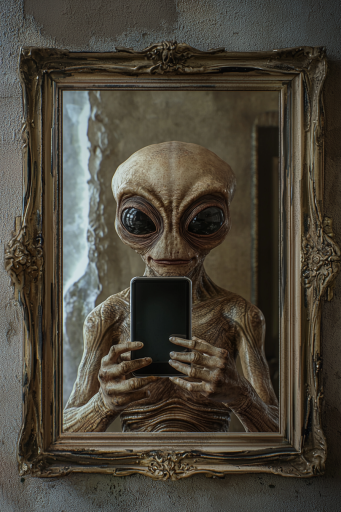Explore the Best AI Image Gallery

5G Technology: Transforming the Creative Landscape
The advent of 5G technology represents a significant leap in communication networks, boasting faster speeds, reduced latency, and greater capacity. These features promise to revolutionize various sectors, especially the creative industry. This blog post explores how 5G is reshaping creativity, its potential uses, ethical considerations, and the anticipated trends for the future.
The Creative Industry in the 5G Era
5G's enhanced capabilities are set to transform the creative landscape by enabling artists and creators to harness technology in unprecedented ways. From film and animation to visual arts and music production, 5G opens the door to complex, high-quality creative endeavors.
Enhanced Content Creation
With 5G, content creators can upload and stream high-definition videos and images with ease. This means that:
- Live Streaming: Musicians, artists, and other creators can broadcast their work in higher quality and with less buffering, allowing real-time interaction with their audience.
- Collaborative Projects: Artists around the world can collaborate in real-time on projects using cloud-based editing software without the delays previously caused by slower connections.
- Virtual and Augmented Reality: 5G technology facilitates seamless experiences in virtual and augmented reality, enabling immersive storytelling and interactive installations that weren't feasible before.
New Creative Tools
The rise of 5G has given birth to innovative tools and platforms that enhance the creative process. Some examples include:
- AI-Assisted Creativity: With faster data processing capabilities, AI tools can analyze and understand creative patterns, helping artists generate new ideas and streamline their workflows.
- IOT Integration: The Internet of Things (IoT) can connect creative devices, allowing for synchronized performances and exhibitions, and enabling creators to manipulate art pieces remotely.
Potential Uses Beyond the Creative Industry
While the focus here is on the creative sector, 5G technology has potential uses across various fields, including:
- Healthcare: Remote surgeries and telemedicine can benefit from the low latency of 5G, allowing healthcare professionals to provide timely care.
- Smart Cities: Enhanced communication networks can lead to improved infrastructure, efficient energy usage, and better public services.
- Education: 5G can facilitate interactive learning experiences through virtual reality classrooms, making education more engaging.
Ethical Considerations
As with any technological advancement, the rise of 5G brings ethical questions that need addressing:
- Data Privacy: With increased connectivity, the potential for data misuse rises. Implementing robust privacy regulations is crucial to protect creators and users.
- Digital Divide: Access to 5G may not be equal across all demographics. Ensuring that marginalized communities are included in this transition is imperative to prevent further inequalities.
- Content Authenticity: The ease with which digital content can be created and shared poses challenges regarding copyright and intellectual property. Striking a balance between innovation and respecting creators' rights is vital.
Future Trends
As 5G technology evolves, the creative industry is likely to witness numerous emerging trends:
- Hyper-Connected Experiences: Audiences can expect more immersive experiences as creators utilize 5G to bring their visions to life, blending physical and digital realms.
- AI Integration: The integration of AI in creative processes will become more prevalent, helping creators make informed decisions based on real-time data.
- Collaborative Platforms: Increased collaboration on digital platforms will redefine how art is created, shared, and experienced, with boundaries between genres and forms becoming more fluid.
Conclusion
5G technology is set to revolutionize the creative landscape in ways we are just beginning to comprehend. By enabling faster connectivity and supporting innovative tools, it empowers creators to push the boundaries of their art. However, as we embrace these changes, we must remain vigilant about the ethical implications and opportunities provided by this transformative technology. The future of creativity is exciting, and 5G is at the forefront of this evolution, inviting all of us to participate in a more connected and collaborative artistic community.



](https://images.ai-img.art/thumbnails/150/8c3bd422d50d35735d8fb33bd314a79e30e5b150129d5d09bdad822a2007593f.webp)






](https://images.ai-img.art/thumbnails/150/1614d64dd7156c95db952258978be809eb3db8cea4453fec69c49cbdfe63fa94.webp)

](https://images.ai-img.art/thumbnails/150/3a60737a5b67fa252207ad1ae6db245a26284f53fb5846996bb34515b39ff269.webp)